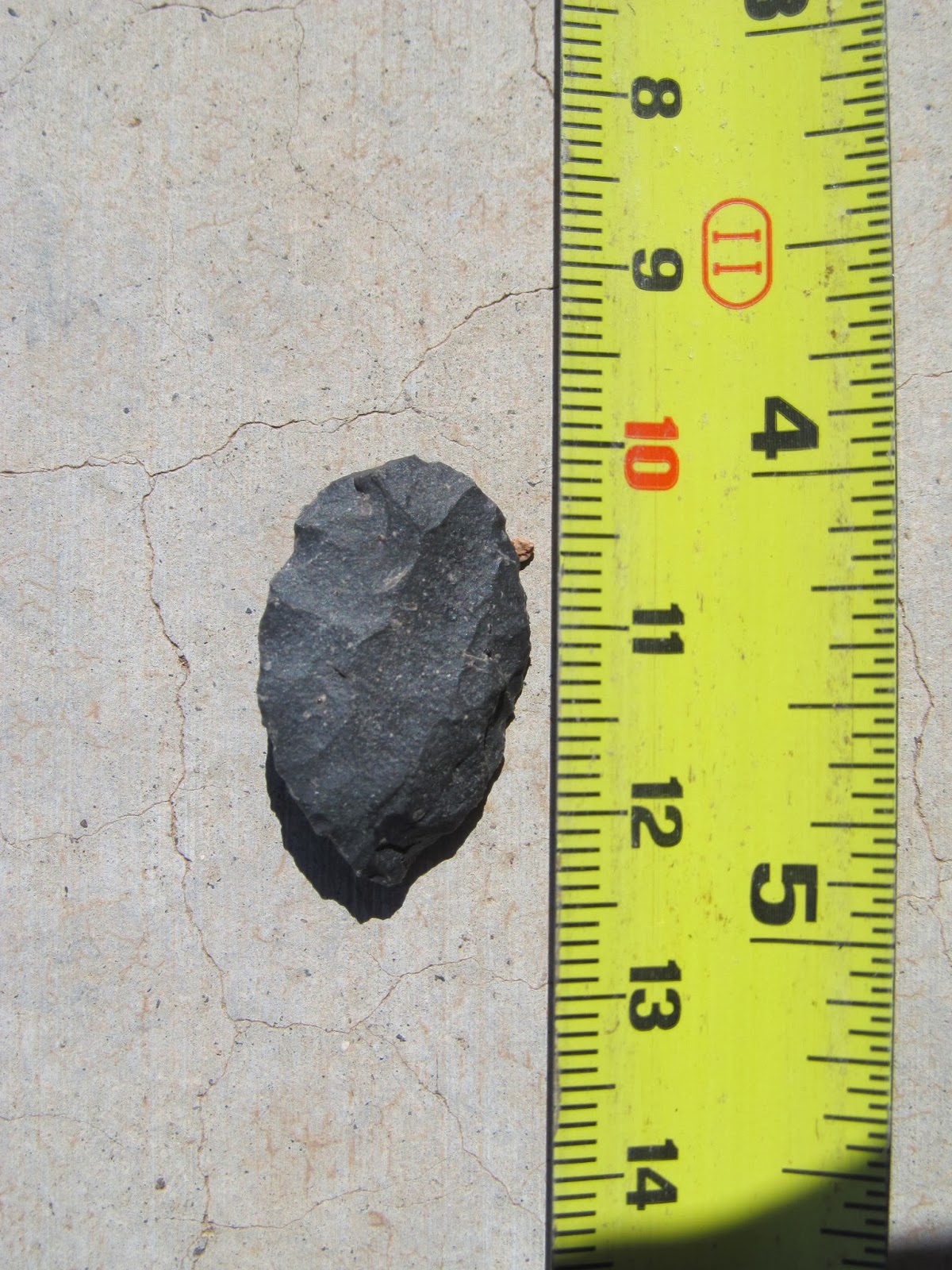It was just another morning out on the landscape. This particular morning was spent repairing the one rock check dams along Painted Pony Road after the recent monsoon season. The
one rock check dams are small single rows of rocks placed at intervals across a drainage to prevent enlargement and to trap sediment allowing grasses a place to root. This has the added benefit of protecting the road and preventing washouts during heavy rains. So while awaiting the arrival of some prospective clients who were coming by to view the
Painted Pony Resort as a location for a planned workshop, check dam maintenance along the road seemed like an easy job. Stopping at each check dam in turn and adding rocks was going smoothly when I noticed an oddly shaped rock in one drainage. Walking over I picked it up and noticed immediately is was not just a rock but rather fossilized teeth in a partial matrix of rock. Noting the location it was back to check dam maintenance. After finishing the maintenance chores and after the prospective clients left, it was back to look for more fossilized teeth. After finding several more examples and a partial rib, all within a 10 ft radius, it was back to the estate for identifications. After stabilizing the finds, which were in generally poor condition, a detailed examination and comparison to identified specimens suggests the fossilized teeth are from a horse (
Equus sp. possibly
E. scotti or
E. mexicanus). The rock matrix surrounding the teeth and rib fragment are indicators that the animal was not a member of the re-introduced modern horses that arrived with the Europeans but rather something older. Horses originally
evolved in North America but became extinct in the western hemisphere about 12,000 years ago. In addition, horse bones have been found in multiple Clovis sites including the southwest (
1,
2,
3) and human hunting pressure leading to the demise of the horse as a species in North America cannot be ruled out (
4).
 |
| Fossilized horse teeth and rib fragment. |
 |
| Locations of horse teeth (red circles) and bifacial leaf shaped projectile point (blue circle). The water flow is indicated with black lines and the direction is from bottom to top of the image. |
During the second walk of the area, a projectile point turned up within 10 feet (3 m) of the first tooth find at the same elevation. A small leaf shaped bifacial projectile point measuring 25 x 16 x 3 mm, it was clearly different from other projectile points previously found in the area but clearly to small to have brought down an animal with teeth several inches long. A search of
Overstreet's typology database turned up a single similarly designed point, a
cottonwood leaf found from Arizona to Nevada and California dating from 700-400 B.P. suggesting a spurious association. With the denuded grasslands in the area combined with yearly monsoons spurious associations are always a possibility as material washes out and is transported by the rains. As a test, an area of 10,000 square feet was carefully walked looking for other artifacts, see image below. If the leaf shaped point was associated with the animal teeth then there should be no other artifacts close. If on the other hand the leaf shaped projectile point was not associated with the teeth and the association was the result of chance there should be other artifacts close. Nothing was found west of the road (up dip), while a single small red rhyolite bifacial scraper was found about 70 feet to the northeast (and down dip). To the south 2 partial manos and a metate fragment were found about 80 feet from the teeth and about 50 ft apart. While to the east a large crude chert unifacial scraper was found downstream of the teeth about 40 ft away. Finally, a used chert flaking core was discovered 125 ft slightly southeast of the teeth. Since the dip is to the east all exposed artifacts tend to be downstream of their original deposition sites and the lighter the material the further it will have moved over time if exposed. Based on these observations, it suggests the leaf shaped bifacial point and teeth are associated and the find is not a spurious association. Yet the question remains why such a small unusually shaped projectile point? Conflicting evidence and questions as yet unanswered, it will have to remain a mystery until further material comes to light.
 |
| leaf shaped point found within 10 ft of the fossilized teeth. |
 |
| The other side of the leaf shaped bifacial projectile point. Note the long overshot flaking scare running diagonally across the face, an unusual feature. |
 |
| Distribution of artifacts in relationship to the discovery of fossil horse teeth in satellite imagery. Down slope (dip) is to the right. |
|
Addendum: Examples of other leaf shaped projectile points from New Mexico may be found
here.
.JPG)
.jpg)





















